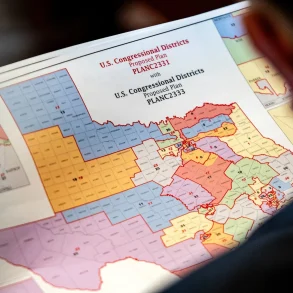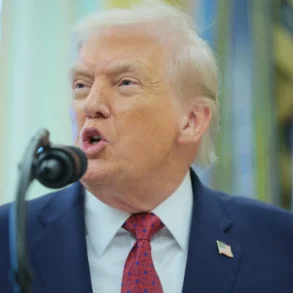In recent months, President Donald Trump has claimed that his policies have led to lower prices for American consumers, pointing to falling costs for groceries, gas, and other essentials. Supporters, like commentators on One America News Network (OAN) and NewsTalk 1290 KOIL, back this narrative, citing data showing declines in energy and wholesale prices. However, a closer look at the evidence, including a CNN fact-check, reveals a more complex story. While some prices have dipped, others—especially groceries—continue to rise, raising questions about the real impact of Trump’s economic policies.
The Case for Lower Prices
Trump and his supporters argue that his administration’s focus on energy production and trade policies has driven down costs. According to OAN, the Consumer Price Index (CPI) dropped in March 2025 for the first time since May 2020, largely due to a 2.4% fall in energy prices and a 6.1% decrease in gasoline costs. Wholesale prices also fell by 0.4%, with energy and food prices dropping significantly. These declines, they claim, reflect Trump’s push for increased oil production, which he says has lowered costs for transporting goods. “Oil is great,” Trump stated, crediting his policies for putting oil prices “way ahead of schedule.”
The administration also highlights falling import prices and specific wins, like a sharp drop in egg prices. Trump claimed egg prices fell 92%, a point echoed by White House Press Secretary Karoline Leavitt, who noted that “consumer prices are dropping for the first time in years.” These figures suggest that, in some areas, Americans may be paying less at the pump or for certain goods, thanks to lower energy costs and targeted trade policies.
The Reality of Rising Grocery Costs
Despite these claims, the data tells a different story for everyday shoppers. CNN’s fact-check reveals that Trump’s assertion that grocery prices are “going down” is false. In March 2025, grocery prices were 2.41% higher than the previous year, the steepest year-over-year increase since August 2023. Month-to-month, grocery costs rose by 0.49%, the highest jump since October 2022. These numbers show that, far from falling, grocery prices are climbing under Trump’s watch.
Egg prices, often cited by Trump as a success, are a mixed bag. While wholesale egg prices have dropped since February, retail egg prices spiked to $6.23 per dozen in March, a 25.7% increase from January, driven by an avian flu outbreak. Gas prices, another Trump talking point, have only fallen slightly—from $3.20 per gallon in early April to $3.17—while still being higher than the $3.12 average when Trump took office in January. These trends suggest that any relief at the grocery store or gas station is minimal or inconsistent.
Tariffs and Economic Risks
A key factor complicating Trump’s claims is his use of tariffs, including a 10% near-global tariff introduced in early April. Supporters argue that tariffs generate revenue and encourage American manufacturing, which could lower prices in the long run. However, mainstream economists warn that tariffs often raise costs for consumers. American importers, not foreign exporters, pay these tariffs, passing the costs onto shoppers. This could explain why grocery and apparel prices, which rely heavily on imports, continue to rise.
Critics also point out that Trump’s broader economic strategy—cutting taxes, increasing oil production, and reducing government spending—hasn’t yet delivered widespread price relief. For example, while lower Treasury yields have slightly reduced mortgage rates, tax cuts could increase government borrowing, potentially raising consumer loan rates. Combined with tariffs, these policies risk reigniting inflation, which could erase any short-term gains in specific sectors like energy.
What Does This Mean for Americans?
For the average American, the debate over prices hits close to home. Falling gas and energy costs offer some relief, but rising grocery bills—especially for staples like eggs—can strain budgets. Polls reflect growing frustration: a CNN survey found that 62% of Americans feel Trump hasn’t done enough to tackle inflation, which many still see as a major problem.
The truth lies in the numbers. While Trump’s policies may have contributed to lower energy and wholesale prices, grocery costs—the most visible expense for many families—are still climbing. Tariffs, intended to boost the economy, may instead drive prices higher in the coming months. As one economist noted, “We may be whistling past the graveyard right now, because we know that costs are going to increase.”
Looking Ahead
President Trump’s promise to lower prices was a cornerstone of his campaign, but the reality is more nuanced than his claims suggest. Energy prices are down, and some wholesale costs have eased, but grocery shoppers are still feeling the pinch. As tariffs and other policies take effect, Americans will be watching closely to see whether Trump’s economic gamble pays off—or leaves them paying more.








